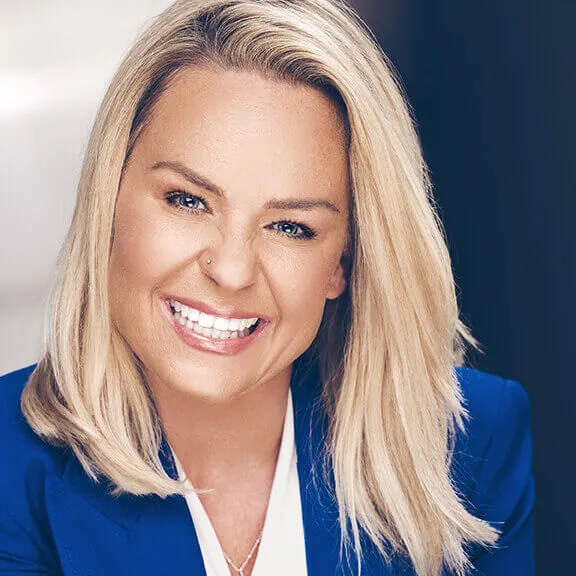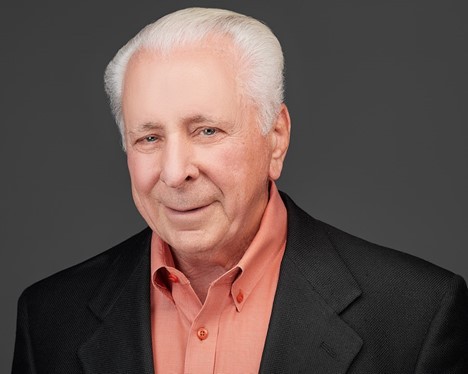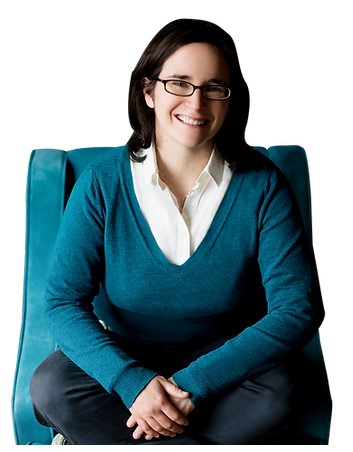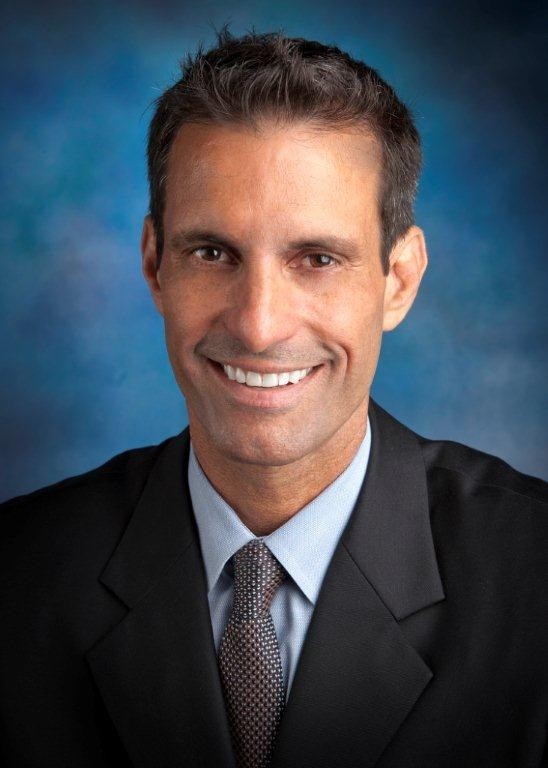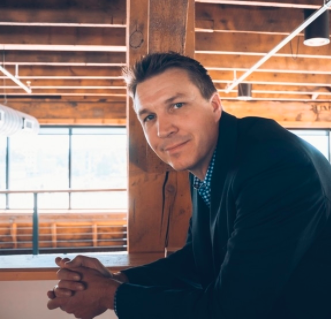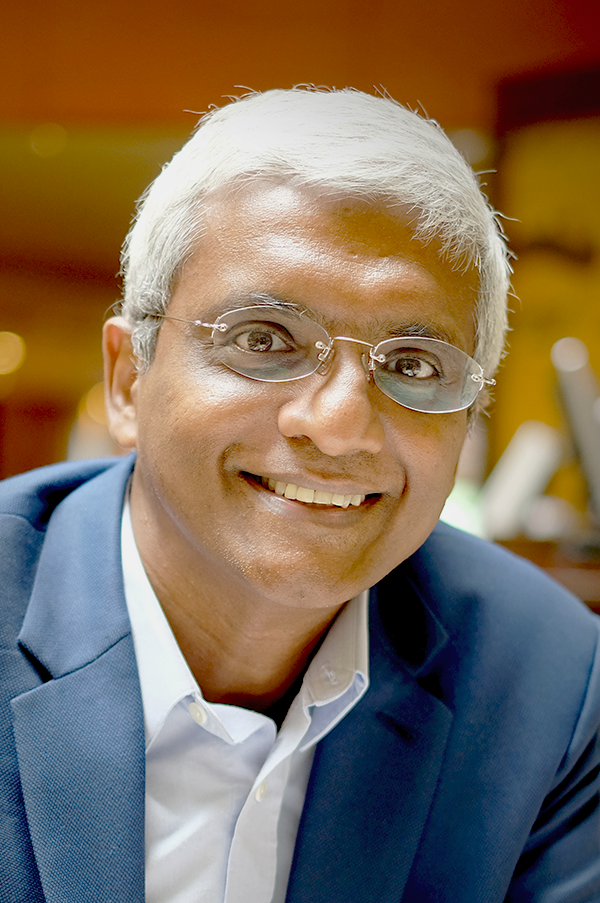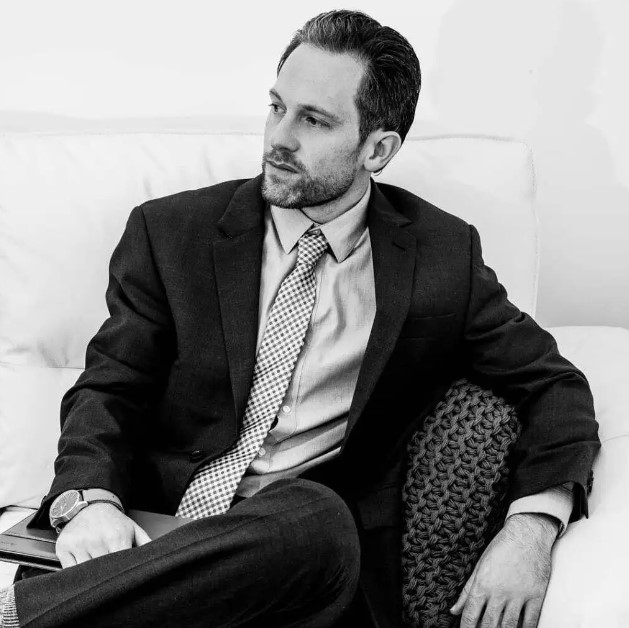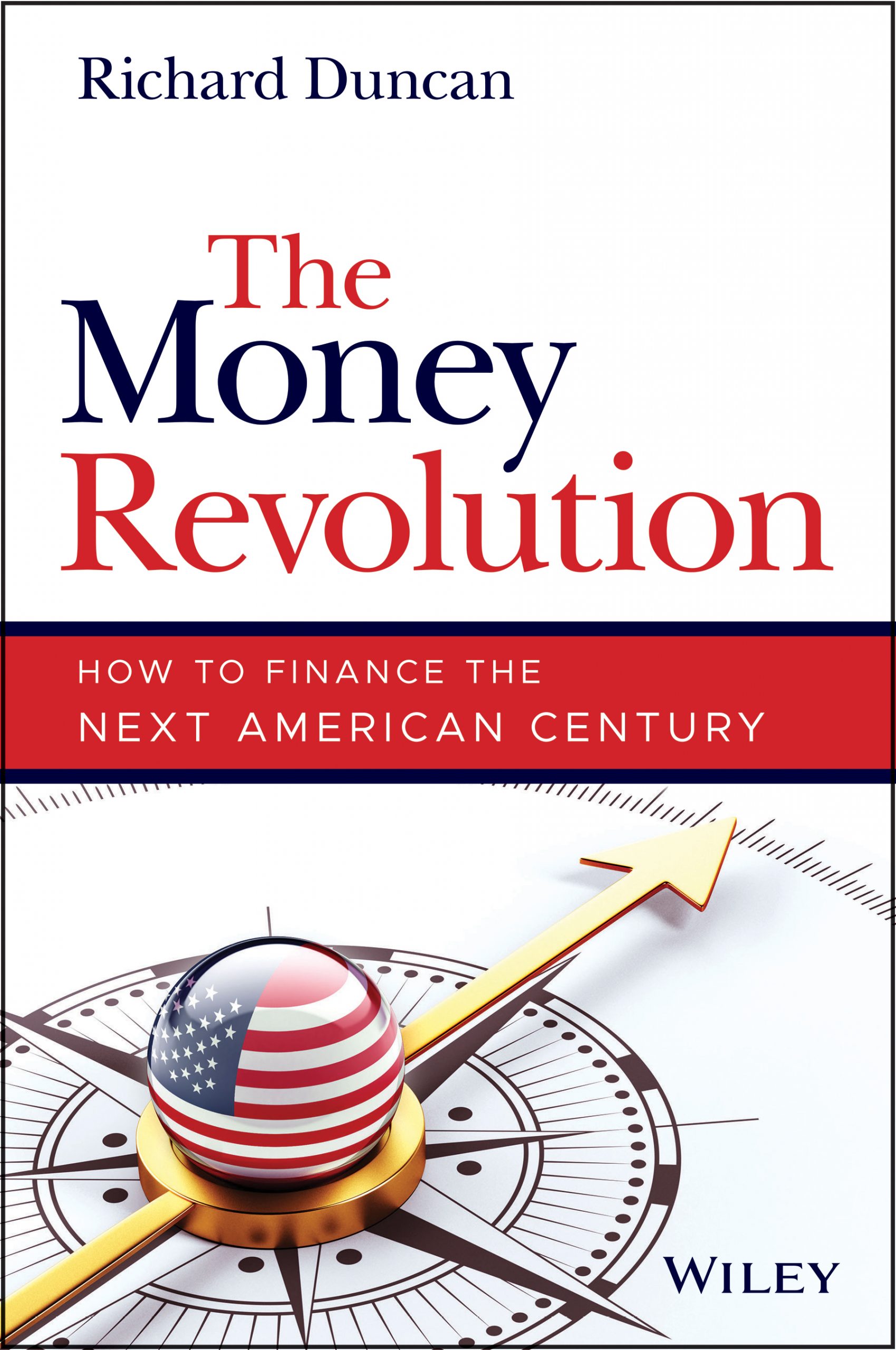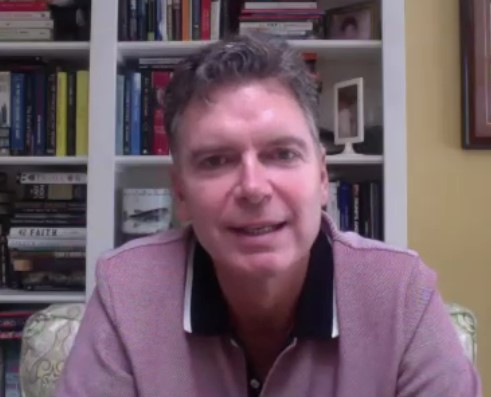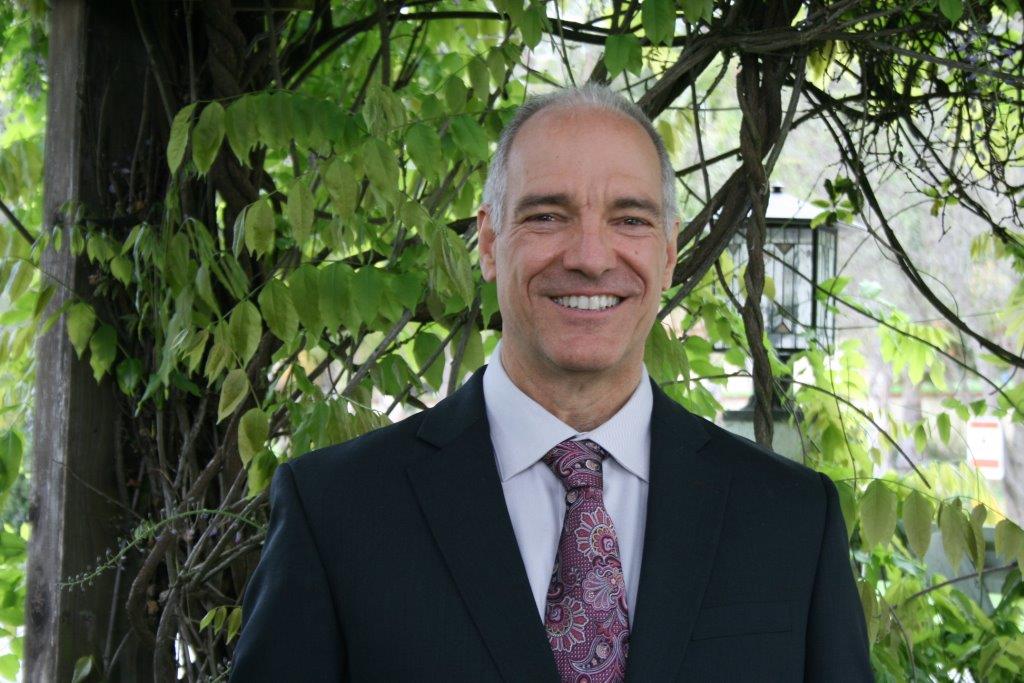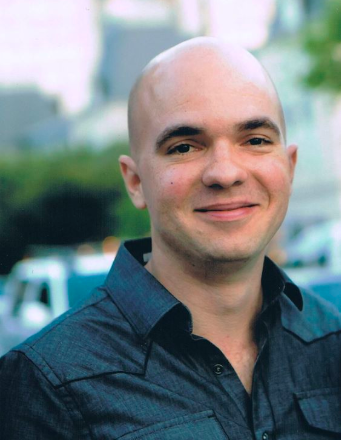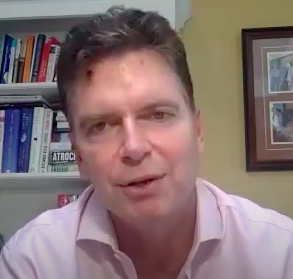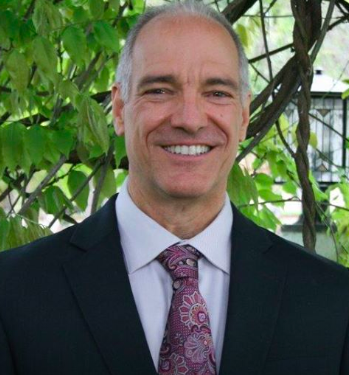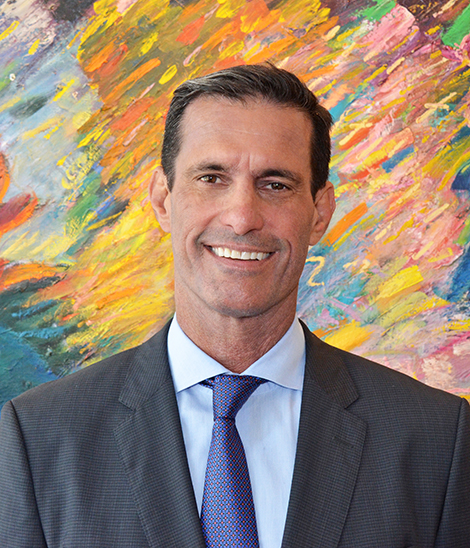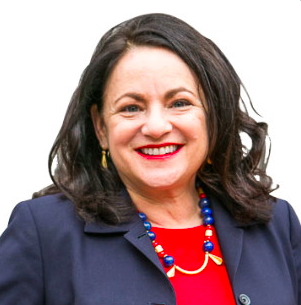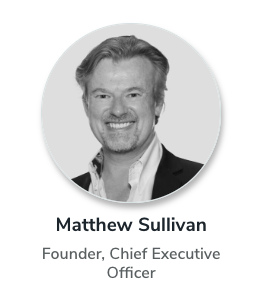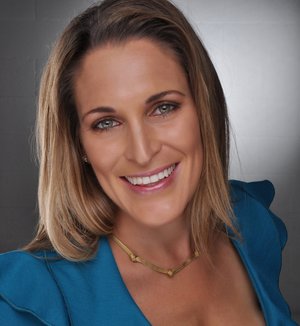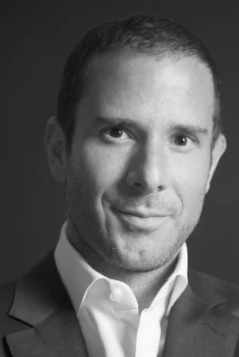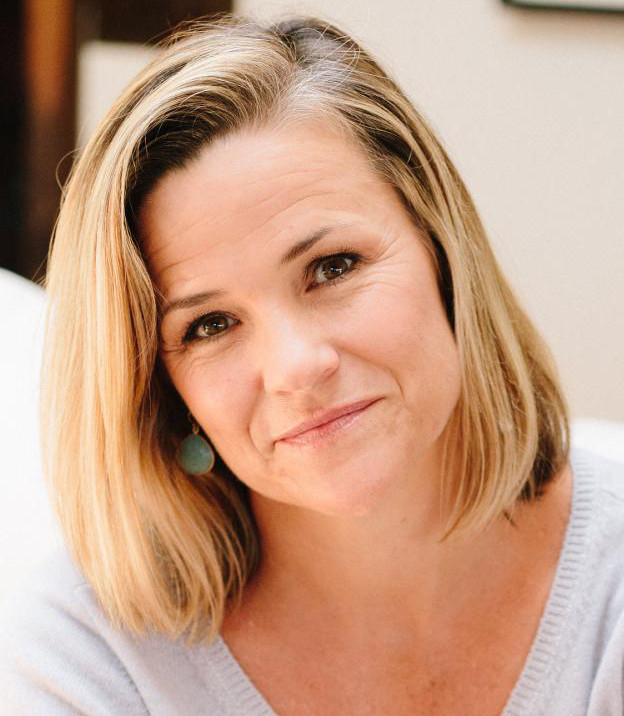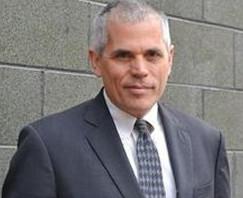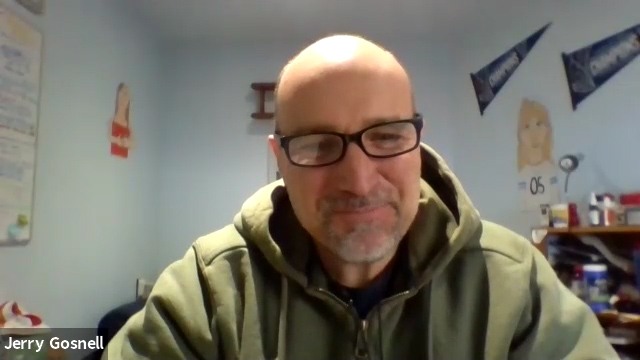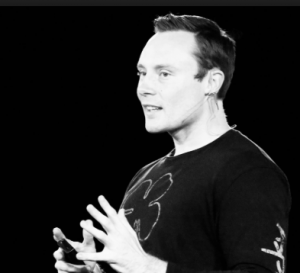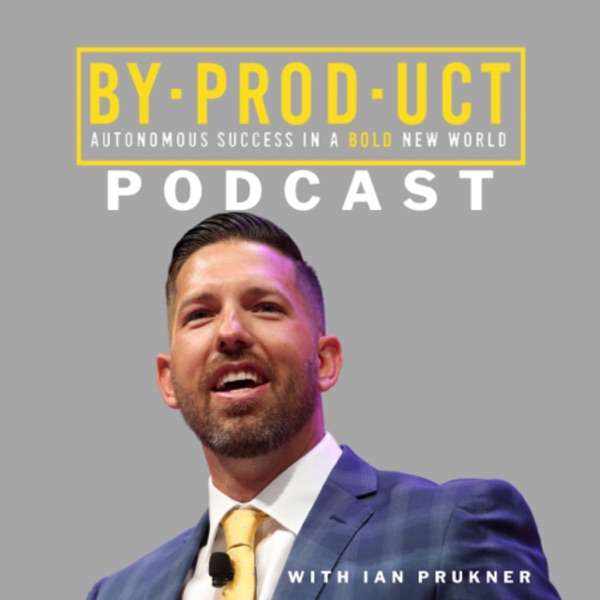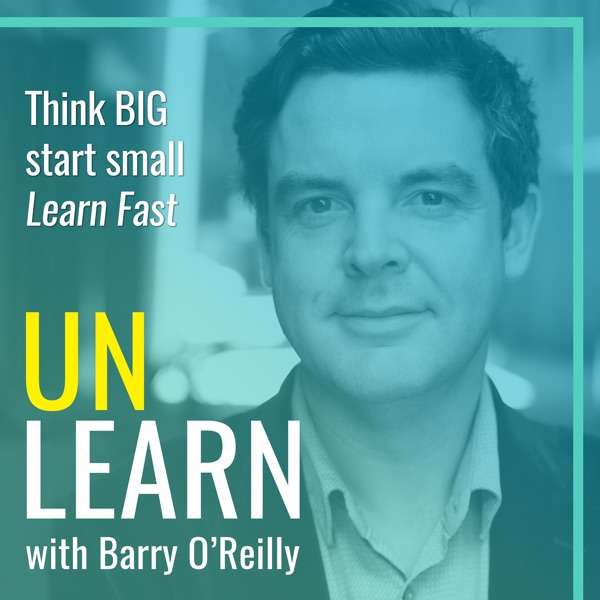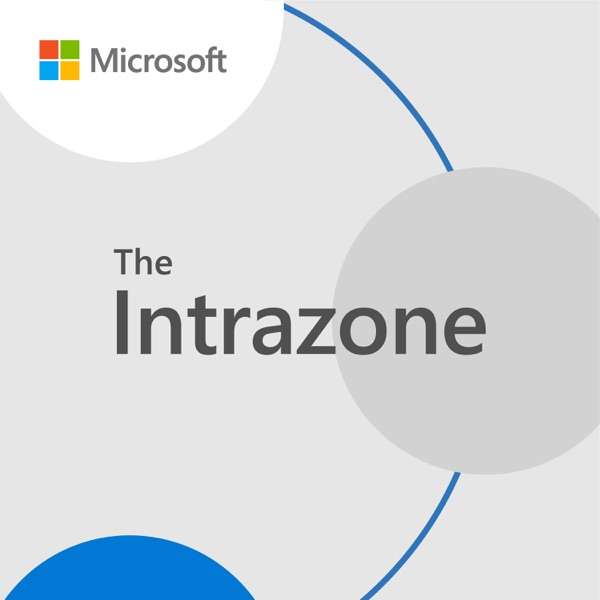This week’s Wealth Formula Podcast is about the economics of sports—if you are a sports fan like me, you will love it.
But before we get to that, I want to give you my two cents on one of the most important elements to financial success in anything: conviction.
As I write this, Bitcoin sold off from a high of $126K to under $90K. Other cryptos have lost 50-90 percent of their value in the same time. It’s been called a blood bath. Some are even saying it’s over for Bitcoin.
I might even believe them if I hadn’t seen the same story at least 5 times before over the past decade. True bitcoiners have tremendous belief in what bitcoin means to the world.
Someone who bought $1,000 of Bitcoin in 2010 and simply refused to sell would now be sitting on hundreds of millions of dollars. That is the reward for true conviction.
The irony of this bitcoin cycle is that many of those individuals with high conviction are finally cashing in on the fruit of their patience. Almost every day, another wallet that hasn’t been active since 2011 is selling off a billion dollars into the market into the hands of Wall Street and governments. That’s why prices are tumbling.
But don’t be fooled into thinking that these buyers are the dumb money holding the bag. The story does not end here. Nor is the Bitcoin story a one-off either. History repeats itself as the story of investments unfolds over time.
In December 1999, Amazon stock traded at $106. After the dot-com crash, it fell to $5.97. Every talking head had a eulogy written for the company. But if you were crazy enough to hold through the storm, your conviction paid off spectacularly: $10,000 invested in Amazon in 2001 is worth over $20 million today.
Now, moving on to the topics of sports. One of my favorite examples of conviction is from 1920, when George Halas bought the Chicago Bears franchise for $100.
The Halas family could’ve “taken profits” countless times. They lived through multiple depressions, a world war, a dozen recessions, five or six league restructurings, labor disputes, player strikes, and decades of bad seasons. Anybody else would’ve bailed.
But they didn’t, and today, the Chicago Bears are valued at over $6.3 billion.
These stories have different time periods and different industries, but they all teach the same lesson: Conviction is one of the most profitable assets you can own.
That’s the message I want to leave you before we move into a perhaps more entertaining topic: the economics of professional sports.
Most people think of sports in terms of touchdowns, rivalries, and Super Bowl rings. But the truth is… professional sports is one of the greatest wealth-creation machines in American history.
Few people understand those engines better than our guest this week. He’s one of the clearest, most respected voices in sports economics today, and he’s going to break it all down for us: salary caps, streaming deals, and team valuations.
If you are a sports fan, you are going to love this week’s episode of Wealth Formula Podcast!
Transcript
Disclaimer: This transcript was generated by AI and may not be 100% accurate. If you notice any errors or corrections, please email us at phil@wealthformula.com.
Donald Trump pretty much bankrupted the USFL by saying we’re gonna go head to head, uh, with the NFL instead of trying to build a a Spring Sports League.
Welcome everybody. This is Buck Joffrey with the Wealth Formula podcast. Happy, uh, Thanksgiving week, uh, and uh, this week because it is a holiday week in, you know, football and all that kind of stuff that goes along with it. We’re gonna talk. About the economics of sports. And if you’re a sports fan like me, you’re gonna really like this.
I really had fun with this interview actually. It was just like me asking a bunch of questions I always had. But anyway, before we get to that, I want to give you my 2 cents. One of the most important elements that I think there is give financial success in anything, and that is conviction. And I bring this up to you in part because Bitcoin sold off.
Um, and well at least all the time, I’m recording this from a high of 126,000 and then it, it plunged actually below 90,000. And then of course, there were other cryptos that lost 50 to 90% of their value in the same time. Uh, yeah, it was a bit of a bloodbath. It’s been called a bloodbath and it is a blood bath.
And of course, there are some who are declaring Bitcoin dead Again. Um, and you know what? I might even believe them if I hadn’t seen, uh, the same story, at least I’d say, I don’t know, maybe four or five times over the past I, eight years, nine years, whatever. True Bitcoiners though, have a tremendous belief in what Bitcoin means to the world and where this is headed.
And some of them, well before I ever got in, right? I mean. That serious conviction because, you know, the people who were buying, you know, back in 2012, 13, I mean, this was completely outta nowhere, had no one’s, uh, no one’s support, nothing. In fact, in 2010, uh, you know, if, if you bought Bitcoin back then simply refuse to sell up until now, um, say you bought a thousand dollars of Bitcoin.
You’d be sitting on hundreds of millions of dollars of Bitcoin, right? That’s the reward for true conviction. And those people, frankly deserve it. Because can you imagine if you just bought a thousand bucks or something and it was already up to a million, it was already up to 10 million and all the way up to 20 million, you still didn’t sell.
I mean, I don’t even know if I could, I don’t know if I could do that. I don’t think I could. I mean, at some point I would be like, take the money and run. Right. Um. You know, it’s a funny thing though. The irony of this Bitcoin cycle that we have right now is that many of those individuals with, you know, super high conviction, um, the ones that were in way before any of us and before me, well, they’re actually, a lot of them are actually cashing out sort of the fruit of their patients.
Right. Almost every day right now, you’re seeing a another wallet that’s been dormant since like 2011. And all of a sudden it sells. It’s something that has done nothing, but just sit there in storage, selling off a billion dollars into the market, probably, you know, started out as like 10 grand. Right? And where’s that money going?
It’s going to the hands of Wall Street’s, going in the hands of, uh, governments. That’s actually the ironic part here. That’s why prices are tumbling. Because I think people are saying, well, gosh, we’re at a hundred grand. I’m sitting on hundreds of millions of dollars. I’m sitting on a billion dollars. Uh, I think it’s time to get out, right?
But don’t be fooled, in my opinion, to think that these buyers are, uh, you know, they’re the dumb people holding the bag. I mean the, the people holding the bag, it’s Wall Street, right? They’re governments and reserves. And, uh, you know, big treasury companies, the story doesn’t end here. And the other thing is that Bitcoin story is not a one-off in history at all, right?
In fact, you know, it, Bitcoin gets a lot of attention. But you even look at something like Amazon, right? December, 1999, Amazon stock trading at $106. Then the.com crash comes, and guess what? It fell down to $5 and 97 cents. That’s a Bitcoin like crash, right? And every talking had a eulogy written for the company.
And if you were crazy enough to hold through that storm, your conviction paid off spectacularly. If you had $10,000 invested in Amazon in 2001, it’s worth over $20 million today. So anyway, that’s the point I have though. You know, it’s, the point is about conviction. Uh, and, and I’m not saying that you should just be dumb, buy something and be dumb about it, but especially on these asymmetric things where you think something could be really big, give yourself a time, a period, right?
I mean. The only thing other than Bitcoin that I think I, I’m really interested in, in the crypto space is something called Solana. Solana is down like 50% from its ties, and I still think that, you know, when the dust settles, I think this is going to be something that’s gonna pay, pay off. Now if I were to watch it day by day, uh.
It’s demoralizing, right? But, but I think the point is, if you have some conviction in something, give it some time. You know, say, I’m gonna watch this for at least five years if I can, if I don’t absolutely get into a situation where I need that money, which hopefully you don’t, because this is not where that kind of money belongs.
Right? But give it some time and don’t look, there’s lots of noise, and, and, and then just give it some time and see what happens. Right? Now speaking of giving it some time, you know, a similar story in the sports arena in 1920, George Halas, I think it was Papa Bear, right? George Papa Bear. Halas bought the Chicago Bears franchise for a hundred bucks.
Yep, a hundred bucks. Now the Halas family could have taken profits countless times, and they lived through lots of, uh, bad times. Depressions, uh, you know, world War, uh, a dozen recessions, five or six, uh, league restructurings, labor disputes, player strikes, decades of bad seasons. And maybe anybody else would’ve billed at some point if they’d made, you know, millions of dollars from the a hundred bucks.
But they didn’t. And the Chicago Bears, as much as I don’t like the Chicago Bears, are valued over $6.3 billion.
Now
these stories, ultimately, they’re, you know, different time periods, different industries, but same lesson conviction, it’s one of the most profitable assets you can own or attributes at least.
Maybe it’s not an asset, I don’t know. That’s a message I wanna leave you before we get into the topic of today, which is the economics of professional sports. Now, most people think of sports in terms of touchdowns, rivalries, super Bowl rings, all that kind of thing. But the truth is professional sports is one of the greatest wealth creation machines in American history, and few people understand those engines better than our guest this week.
He’s one of the clearest, most respected voices of sports economics today. And he is gonna break it all down for us. We talk salary caps, streaming deals, team valuations. We talk about the Green Bay Packers and why they’re owned by the city of Green Bay instead of owners. All that kind of stuff that you might have wondered about but you never really knew.
So if you’re a sports fan, enjoy it and happy Thanksgiving. We’ll have that interview for you right after these messages. Wealth formula banking is an ingenious concept powered by whole life insurance, but instead of acting just as a safety net, the strategy supercharges your investments. First, you create a personal financial reservoir that grows at a compounding interest rate much higher than any bank savings account.
As your money accumulates, you borrow from your own. Bank to invest in other cash flowing investments. Here’s the key. Even though you’ve borrowed money at a simple interest rate, your insurance company keeps paying you compound interest on that money even though you’ve borrowed it. At result, you make money in two places at the same time.
That’s why your investments get supercharged. This isn’t a new technique. It’s a refined strategy used by some of the wealthiest families in history, and it uses century old rock solid insurance companies as its backbone. Turbocharge your investments. Visit Wealth formula banking.com. Again, that’s wealth formula banking.com.
Welcome back to the show everyone. Today. My guest on Wealth Formula podcast is, uh, Dr. Victor Matheson, professor of Economics and Accounting at College of Holy Cross. He’s a leading authority on sports economics, studying everything from the financial impact of mega events like the Olympics and World Cup, to the inner workings of professional sports leagues, lotteries, and public finance.
Uh, welcome to the show. How are you?
Well, thanks for having me. Great. Always happy to talk some sports economics.
Oh gosh, this is interesting. I’m a huge, uh, I’m a huge sports fan, especially NFL and, uh, so, you know, instead of talking personal finance, you know, without, uh, without any, uh, uh, sports in it, this is definitely a, uh, welcome for me.
So, um, well, vigor, let’s start, start with this, you know, um. Most of us who are big sports fans, you know, we’re really driven by the idea of the, the, you know, the, the emotion, the entertainment. Taking a step back from your perspective, how should we look at this whole ecosystem of sports as an economic system?
Well, uh, first of all, it’s. It’s both bigger and smaller than, uh, than you would imagine. So if we think of the NFL, the NFL ha generat more revenue than any, uh, sports league in the world. Uh, this year it’ll come in somewhere around 22 ish billion dollars. Uh, that certainly seems like a lot of money. On the other hand, a Sherwin Williams paint store comes in at about that same sort of, uh, revenue, you know.
On many podcasts talking about talking about paint, right? Um, if we talk worldwide, all the sports leagues all put together, uh, we’re talking about maybe a hundred billion or so, maybe 120 billion, roughly the same size as Johnson and Johnson. So, uh, you know, it’s a big industry. It’s a, you know, billions in with a B, but it’s also a tiny percentage of, of the total amount of economic.
Being generated every year, and, and so we can easily get, uh, um, we can easily get ahead of ourselves and say, well, you know, uh, it’s the biggest company in the world, the NFL, it’s, it’s not even 500.
Interesting. Um, so let’s talk a little bit about this, um, uh, how value is created in these leagues. So, so, you know, you said professional leagues are built on the economics of controlled scarcity.
So talk a little bit about that, if you would, how this scarcity model drives value and, and, and protects, uh, uh, profitability.
Right. So let’s compare, you know, let’s compare a Walmart. To the NFL, right? Uh, so Walmart takes a look at all these potential places that you could put a Walmart and they say, oh, this would be a good one.
And a Walmart goes in. And now that Walmart’s generating economic impact and generating revenues for the, for the. For the company and all these sort of things. Now let’s look at the NFL, right? Uh, the NFL does the same thing. They said, Hey, uh, let’s look at Las Vegas. Would that be a good place for a, for a team?
Uh, is is London gonna be a good place for a team? Uh, and they look at those. Uh, but here’s the deal. If Walmart looks at 50 places and says, Hey, these 35 would be good places. They’re not gonna just pick the best one for a franchise. They’re gonna put. Walmart’s in all of those, right? Uh, the NFL on the other hand, very specifically saying, you know, we actually don’t wanna put an NFL franchise in every place that we could, uh, make a profit in because we want to be in the, in a world where there are fewer NFL franchises than there are cities that want them, and that generates demand for this.
Um, Walmart can’t do that because if Walmart doesn’t put in a franchise somewhere, uh, you know, Target’s gonna come in instead. Uh, that’s not gonna happen in the NFL, uh, because there’s no other competitor to that. So they can actually restrict the number of franchises they have, which means that every franchise is selling at a, a super premium price.
These are, you know, at the lowest end, we’re talking five, six, $7 billion franchises. Now, uh, they could sell multiple new expansion franchises, but they choose not to. To maximize the value of those existing franchises.
It’s been a while actually since the NFL expanded, um, the league. And I’m curious, what are, you know, what is it that drives them ultimately to do that?
I mean, again, you just mentioned there’s this whole scarcity issue. I mean, what do you think are sort of the limitations or sort of the. You know, the, the, the points at which they say, well, gosh, maybe we do move to London, or maybe we do that. Like, do you have a sense of that?
Yeah. So a couple things they wanna do.
So first of all, one of the big things that all of the leagues in the United States have done is they want to be a big enough league to make sure that they cover all of the good spots or most of the good spots for a team. You don’t wanna leave enough good team locations that a rival league could come and start to challenge you.
Right? So thinking back to the 1950s, uh, one of the most important sports leagues ever to come about in the United States. Actually never even existed. And this league is what was called the Continental League. And the Continental League in the 1950s arose as a challenger to major league baseball. Major League baseball in the 1950s was exactly the same size as it was in 1901.
It was 16 teams. But the United States had grown immensely and the league had started to move, you know, the Dodgers to LA and the Giants to San Francisco, but you still had huge amounts of the country uncovered by baseball. And so this Continental League came about as an idea saying, you know what? We can take on Major League Baseball by putting franchises in places that it doesn’t exist.
They said, oh, here’s our new eight league team. And the way Major League Baseball responded to that is before continental baseball could even start, uh, start existing, it said, oh yeah, well we’re gonna put a team in Minneapolis. We’re gonna put a team in Houston. We’re gonna put teams in these Lee in these cities that the Continental Baseball Association was gonna go into.
And therefore, uh, continental baseball never got into existence because Major League Baseball expanded into those locations and everyone has taken that, that hit. You need to be big enough to make sure that every place with a, a good chance at having a team, or at least most of them, uh, are covered so that there’s 8, 10, 12 cities out there, uh, a big enough footprint that you could have your own new league.
Uh, do that. So, I mean, if you look at the NHL, if you look at NBA major league baseball, NFL, all about 30 teams. There’s about 30 or a few more big cities. But what’s very important is there’s not 10 or 12 big cities out there, uh, without NFL teams, without football teams that. A rival league could move into that space.
You know, I’m curious when you, you brought up that Continental league in baseball. It reminds me when I was a kid of, uh, the United States football, like the USFL and all, they got all these, uh, players, like I remember Herschel Walker started there and, and there was a number of actually guys who ended up in the NFL and being big stars there.
So they, they definitely, uh, started out pretty strong. What went wrong for the USFL?
It’s so funny you say that. Uh, the answer is actually one big, uh, name. It’s actually Donald Trump. Yeah. So, so what USFL did is, is they noticed that their niche was, um, was the spring, right? We play college football, we pay play high school football, and we play the NFL in the fall, which means that, uh, people out there in the spring, there’s no football out there to be had.
The USFL said, you know, we could move into this market. So first of all, we’re gonna move into the spring where there’s not a rival. Second of all, we’re gonna take at least some cities where there’s not active, um, football teams either places like Birmingham, right? Uh, so any case, uh, what happened there is the USFL.
Kind of got a little, its ego kind of got ahead of itself and it said, Hey, now that we’ve established ourselves in the spring, we do have some big stars like, uh, uh, Herschel Walker, like Doug Flutie, uh, some of these others. We’re gonna try to take the, uh, take the NFL on, uh, head to head and we’re gonna move from the spring to the fall.
And the other thing they did that was very important is they filed a lawsuit against, uh, the NFL, saying that the NFL was engaging in antitrust activity that was keeping this rival league down. It was, uh, keeping them off TV by using their market power with some of the broadcasters. It was using its market power with stadiums to keep these teams out.
And so they took him to court, and I think the, the hope was that there would have to be a settlement and that settlement would result in the USFL merging with the NFL. And the owners of the big teams in the USFL would kind of get a backdoor into the NFL this way. As it turns out, the court, in fact did find in favor of the USFL.
Uh, they said yes, the NFL is engaging in illegal antitrust activity, but they also said. You guys are insane. Uh, going against the NFL in the fall, there was no way you’re gonna make it. So even though the NFL was found guilty, the jury only awarded $1 of damages. Uh, technically in antitrust cases, that’s tripled.
So they actually were awarded $3 in damages and the league basically folded the next day. They won their lawsuit, but they folded the next day. But of course, the owner that had most. Most importantly pushed the league to go head to head against the NFL was the owner of the new, uh, New Jersey team, the Generals New
Jersey Generals.
Right? And it was Donald J. Trump.
Donald Trump. Uh, so Donald Trump pretty much bankrupted the USFL. By, uh, by saying we’re gonna go head to head, uh, with the NFL instead of trying to build a, a Spring Sports League. Now, to be fair to Donald Trump, which I don’t necessarily want to be, but to be fair to him, um, there’s no guarantee that the USFL would’ve made it as a spring league either, but I think anyone, again, a jury looking at this said there was just no chance of that league, uh, surviving against, uh, the NFL.
If you try to go head to head in the poll.
Just, just outta curiosity, uh, you know, there, when you talk about Trump, I know like he’s had an interest in, you know, professional football teams for a long time where he did, at least, there’s a certain politics that goes into buying an NFL team as well, right?
Right. So
the NFL is a partnership. Yeah. Which means that they can choose who they decide to partner with. And, uh, the presumption was, uh, in the 1980s when Donald Trump was trying to become an NFL owner that Donald Trump, uh, neither had the money, nor had the friendships among other NFL player, uh, NFL owners, uh, to get into that very exclusive club.
And so again, he was able to get into the USFL because it was a much lower buy-in, in terms of, of cost. The USFL owners couldn’t be as picky about who they wanted as fellow partners, and again, I think Donald Trump saw the USFL as a way to potentially get into the NFL through the back door through this lawsuit, and, and by moving directly in the, in the fall because the jury just didn’t find that, that there was any plan.
By which the USFL teams could have ever become profitable, uh, going head to head in the fall against the NFL.
Let’s talk a little bit about sort of valuations, because what’s interesting is, you know, you’ve talked about scarcity and, you know, the way that the leagues have manipulated, uh, that to make sure that there, you know, the values continue to grow, but at some point in the last 30, 40 years, the numbers just really skyrocketed, right?
Where these football teams, you know. It wasn’t a straight line in terms of how much they were worth. What, what went into that massive inflection of, uh, of, of valuation?
So, first of all, I think you’re exactly right. There has been this massive inflection. Uh, so I’ve been teaching sports economics since the 1990s and, and the 1990s were kind of at the end of an era where this was really one of the sames back in the seventies, eighties, and even as late as the early nineties, that if you wanna become a millionaire.
Start out a multimillionaire and then buy a sports team because it was a, it was just a, uh, a dumpster fire that you could just burn up cash without any hope of any sort of real return. And that changed in probably the late eighties, early nineties. That really changed, uh, a couple things. Change that, uh, first of all.
By the nineties and certainly by the two thousands, um, most of the big professional sports in the United States had solved lots of their labor relation problems with the, with the athletes. So there was always this question about, uh, you know, do athletes have the ability to bargain with other teams? Are they able to get free agent, uh, agency, are teams going to be constantly fighting and, and spending every dollar that they can down to the point of bankruptcy to buy that superstar team?
And what happened again in the nineties, starting in the eighties through the nineties and the two thousands is pretty much leagues have, uh, agreed to a world where. We’re gonna limit the amount of spending, uh, that we’re gonna do on players so that we’re not all bankrupting each other, bidding for players.
In order to get the players to go along with that, we come to an agreement that we’re gonna share basically half the money with the players. And that’s exactly how the NHL works, the NBA works and the NFL works. Major League Baseball is not like that yet. And we may see not this season, but the next one, um, them trying to finally join ranks with the other, uh, with the other leagues.
Uh, the question is whether we’re gonna see that happen without a gigantic, uh, work stoppage that. You know, some people who are pessimistic think we’re, we may not have baseball at all in 2027. 2026 is fine, but 20, 27 may, may fall. So as soon as like your costs are all covered up, that you know that everyone is kind of playing on a level playing field.
Once we know that we don’t have to worry about bankrupting ourselves. We are only paying players, what we’re bringing in as revenue. All of a sudden, this is a fairly safe investment in a way that it never was prior to, you know, this all dying down. Couple other things going on here as well is, of course, the country’s gotten bigger.
We have gotten bigger, but without adding additional, many additional franchises, which means, uh, those, those tickets are becoming increasingly expensive. We’ve gotten richer in a, in a skewed fashion, so that, uh, that of course the rich have gotten richer, a lot faster than the poor have. But of course, going to a baseball game, especially with those luxury boxes and things like this, is, uh, an activity that is reserved for the wealthy.
And as the wealthy have gotten more, uh, uh, have gotten, you know, increasingly rich, uh, that means that. You know, businesses like Major League Baseball in the NFL that cater to the upper class, uh, do disproportionately well. And the last thing, and I’m sure you’ve talked about, uh, this before, is on your show, obviously you can have, um, you can have investments that are irrational as long as you think there’s someone later that’s irrational, that you can, you can hand it off to, right?
This is, this is all the Greater fool theory. Uh, although I don’t think necessarily in this case, the, the owners are fools, but. Sports teams are a toy of billionaires that you say, well, look, I, I am, I’m a Mark Cuban. I’ve made billions of dollars. Now I want to spend some of my, my money on a, a fun asset.
You know, you and I might collect a baseball cards. Mark Cuban might collect baseball teams, right? Uh, so, uh, in a world you might be willing to overpay because you wanna be a sports soldier and you wanna rub elbows with. You know, KA Leonard, you wanna rub elbows with, uh, with, with Shhe Tani. Um, and you may be willing to overpay for that asset, but guess what?
20 years down the way, there’s still gonna be another billionaire who wants to rub elbows with that next generation of superstars. And so you’re fairly sure that the next time when it comes to sell your franchise, there will be another person who’s willing to pay a premium for that asset as well. So again, as we’ve gotten more billionaires, more billionaire wealth, um, this is something that, uh, you know, has attracted folks like Steve Ballmer to, to part with, with big money.
And, uh, again, as billionaire assets have grown, uh, the ability and the desire to buy these teams has grown as well.
I would think a major driver of the value. Is also coming from, um, the, the media sources, uh, that are changing, right? Where, I mean, I remember, you know, again, being a kid and there was this, you know, there was Monday night football and it was on NBC and.
And that, that’s how it worked. But now there’s like bidding for these things and you’ve got Amazon, uh, doing Thursday night football, which is a little weird. Um, and you know, you sometimes you have, uh, uh, you have games on Peacock. What’s going on with that? How does it affect the economics? Uh, and ultimately, like where is this headed?
So, uh, in a, in a league like the NFL, uh, over 60% of all revenues that they generate is media revenue, right? Because most of us aren’t going to games every day, uh, too expensive for us, or too time consuming or all sorts of other things. But, uh, lots of us tune in on tv. So we’re talking about, uh, well over $10 billion of annual media contracts with the NFL.
Um, and those numbers have been going up, uh, at least in part because you have media companies, uh, in a pretty competitive environment bidding against one another for these things. Now, one of the things about, again, things like the NFL or the NBA is it allows broadcasters or other types of TV networks to bring in customers in a way that their regular programming doesn’t.
So a, a company may actually be willing to overpay for the NFL, kind of as a way to get people to buy all of your other products. A famous example from early days, uh, is, is Fox, right? So in the old days there were three big networks. So old days, I’m talking, you know, 1970s, there were the three big networks, right?
There was A, B, CNB, C, and CBS, and they all competed against one another. And then in the 1980s, this rival network came up and this is Fox. And they wanted to get into all these markets nationwide. Well, how do you make sure that a. A local station decides to pick up the Fox programming. So for example, I grew up in Denver and Denver had a, had a, an independent channel that, you know, played reruns and all sorts of other things, and, and so they have a broadcast license already.
Fox goes up to them and says, Hey, would you like to carry our regular programming? And, and that, that channel said, well, I don’t really think so. We’re doing fine showing Gilligan’s Island and Love Boat and things like this, and we don’t need, uh, an entire set of your programming. We’re doing just fine, as as it is.
Uh, so Fox couldn’t get a foothold in that Denver market. So what Fox does is they buy rights to the NFL. All of a sudden now they go back and say, Hey, we’ve got all this Fox programming, we’ve got the Simpsons, and we’ve got, I don’t know, uh, you know, uh, you know, these early, these early Fox programming.
But, um, they say, but we also have the NFL. You can’t, you can’t turn down the NFL. And then all of a sudden that existing affiliate says, okay, all right, we’ll add the whole line of Fox programming because you’re right, we can’t turn down having the NFL. So what, what basically happens here is the NFL serves as this kind of must stock item.
And uh, you know, Fox was willing to overpay for the NFL because now they’re gonna get everyone to be able to buy the Simpsons and everything else they were offering at the same time. Uh, and so media rights have gone much, have gone up much faster. And we see this all over the place, right? How do you get people to buy.
Amazon Prime. Well, let’s say that’s the only way you get to watch, uh, football on Thursday nights. How do you get people to buy, you know, apple tv? You offer major league soccer games as part of their package, right? Uh, and so this is how you kinda legitimize yourself as an actual, real, uh, you know, quote real media company is by offering some, uh, live.
Live sports. And that gets people who would not otherwise buy Netflix or Amazon Prime or Apple, uh, to actually purchase those because again, they’re offering this secondary item.
Then presumably that in turn drives up the value of of the NFL and you know, they’re bringing in a lot more money because they’ve got not just the three major networks bidding on them, but they’ve got all sorts of big companies with deep pockets.
Willing to, you know, increase their, their, their revenue is and, and that sort of snowballs. Is that, is that fair?
No, and that’s exactly right. And, and for as much as I talk about, you know, that billionaire who wants the an NFL team or an NDA team as a. Prestige asset. Uh, they’re also concerned about having it as an actual functioning asset as well.
So I’m willing to pay, you know, a lot more, even if I’m willing to pay a premium. That premium is based on a fundamental value in the first place. And how do you drive that fundamental value? You drive that fundamental value by maximizing the revenue you generate through things like media contracts, and by maximizing.
And by minimizing your costs, by making sure that your labor costs aren’t gonna run away with you, uh, because again, hopefully you, uh, most of the leagues have solved kind of their long-term labor, uh, their labor strife between
them and the players within each league. There is also some different rules, and specifically, again, being a big NFL fan, I love the fact that the NFL has a salary cap and profit sharing for each team.
’cause it makes for a much more competitive league, basically, you know, for people who don’t know what that means, essentially each team can pay, has a salary cap of how much they can pay players for a given year. But not all of the leagues have that. Uh, I don’t really follow the other ones. I, I’m not sure who has it, who doesn’t, but I know that, like in baseball, I don’t think they have that.
And it creates a situation where you’ve got the Dodgers or the Yankees in, in, in the World Series. More often than not, and you know, you’re not getting the smaller teams usually.
No. So you’re exactly right. So the NFL has what’s called a, uh, a salary cap, and it’s actually got what’s called a hard cap. So they’re actually quite serious about this, and there are very few exceptions that can be made to go over this cap.
Uh, this cap is based on the total amount of revenue that’s being generated by the league. Uh, and again, the cap basically is the way that they make sure that they share. A fair proportion of the money with the players. Uh, what’s also important is they also have a floor. So the, the cap this year is about 225 million, if I remember right, but the floor is about 200 million.
So every team in the league basically is spending the same amount on labor this season, which makes for a very even playing field. And we know that some teams are gonna lose and some teams are gonna win. And it seems like the Browns and the, and the jets never win. And it seems like other teams always do.
But what’s important about that is it’s not just because they’re in a big city, that they have these gigantic revenue advantages and that they can buy a championship. It really is, you know, who is smartest with their money, who’s smartest with your coaching, who’s lucky with the draft and things like this.
And, uh, that makes for a very nice thing here. What’s also super important is the NFL has a gigantic amount of revenue sharing, and the reason for this is every single game you watch on TV is part of a contract that’s being sold by the league, not the team. And because of that, the league is generating all these, all this revenue, and then is equally distributing that money to each of the individual teams.
So a, a team playing in little tiny Green Bay is generating exactly the same amount of media revenue as the New York Giants. Or the LA Rams. So that’s really nice. Uh, again, gigantic amounts of, uh, again, even revenue sharing to all the participants. As a matter of fact, of all of the businesses in the United States, the NFL is probably the single most socialist company.
In the United States. So this Great American pastime is wildly socialist when it comes to how they distribute their, their income.
So what incentivizes a team to be better and to win Then from the ownership standpoint, if there’s revenue sharing, is it just at the, the other sources of income that come, like advertising, things like that.
I’m, I’m just curious, like if there’s so much revenue sharing, what is it that drives a team to, you know, try to be better from the ownership standpoint?
So first of all is that being bad doesn’t help you, right? This isn’t major league baseball, so we’re gonna go the o. The other extreme, at least for a US sport, is major League baseball.
No, uh, salary cap there at all. So you can pay, uh, players as much as you want, although there is what’s called a luxury tax. So as you, as your, uh, salary, your total payroll gets too big, you start getting, uh, uh, paying penalties to the league, which is then redistributed to the poor teams in the league.
That being said, you can spend as much as you want. So yeah, the Dodgers, they spent somewhere, uh, by some accounts somewhere around $400 million this year on talent, including, you know, gigantic contracts to folks like Shhe, Tani, right? Um, but there’s also no minimum either. So if you’re a team that decides, hey, we’re not even gonna bother to try to compete this year, uh, you are the.
I don’t know to, if I should call them the Oakland A or the Las Vegas a a or the Sacramento A or the Traveling through the desert, sort of a for a while. Um, but, you know, this is a team that made a decision not to compete and had a, had a tiny payroll. Uh, other teams have decided to do this, and the, and the NFL you could decide that you didn’t wanna win.
But it wouldn’t save you any money because again, not only is there a salary cap, there’s a salary floor. So if I have to pay $225 million each year anyway, I might as well try to win with that 225 million. Uh, ’cause I don’t have a choice to just collect my paycheck and hire, you know, the Minnesota Gophers for $20 million, uh, for my, for my team this year.
’cause that’s not an option.
Right. Um, one of the things I wanted to just kind of, uh, drill down a little bit on is the model of the Green Bay Packers. As you um mentioned, it’s a tiny little town, northern Wisconsin. Uh, not much going on there. I’ve, I’ve been there myself for a game. It is unique in that it is owned, not by billionaires, but it’s owned essentially as by the fans.
How, how does that work? And, and I guess the question is like, why, why aren’t other teams modeled that way?
So other teams are not modeled that way because the NFL does not want other teams to be modeled that way, nor do any of the other, uh, major leagues out there. Uh, it’s not good for the NFL for a couple reasons.
Uh, first of all. They have to open their books. If it’s a public company and they don’t like to open their books, um, you also don’t have a face for that, uh, league in a way that, that a person couldn’t, couldn’t be in there, uh, pouring extra money in as a kind of a, an, an angel investor. Uh, on top of that, uh, you can’t threaten to relocate to another city unless you get taxpayer subsidized.
Um, you know, uh, stadiums and things because it’s a publicly owned team and we know that, that those public owners will not ever decide to move that team out. How did they get that status in
the first place?
That’s an interesting story, and it’s a story that’s not unique to. The Packers, but it is fairly unique to the United States.
So, uh, in the rest of the world, this type of ownership model actually is fairly common. Um, teams that your, you know, listeners would’ve heard of, like Barcelona, like Al Madrid, these are club owned teams. Um, there is not an owner there. They are owned by the fans themselves, and they’re in the business of.
Trying to stay in business every year while winning as many games as possible. Uh, there is, they’re not trying to win trophies for a, a Steinbrenner or a Mark Cuban. They’re trying to win, uh, trophies for that fan base. That literally, again, the, the season ticket holders are those owners. Um, the NFL itself, you know, was, was a very hard Scrabble league for a long time.
It started in 1920, uh, and between 1920 and 1935. Roughly 55 teams played at least one season in the NFL. And of those 55 teams, basically all but about six of them, had gone outta business or relocated at some point in here. Uh, this is why actually we got such a socialist, uh, uh, business model here is because the owners of the big teams, the owners of the bears.
Uh, the owners of the Giants, uh, they said, look, you know, this league isn’t gonna work if we can’t actually find someone to play. And yeah, we’re making money here, but we’re not gonna continue making money if we can’t find other teams that are gonna work in this league. So they said, Hey, we are gonna be very generous.
We’re gonna make sure that, that we share our revenues with the people, uh, the other people in our league. We would rather have a small piece of a big pie, uh, than a big piece of a pie that is tiny or disappears completely. Uh, so that’s why we ended up with this, uh, revenue sharing. And of course they were very open to any sort of model that kept stable teams around, including a model where rather than some rich owner in, in Green Bay owns that team.
Instead, it’s a municipally owned team. As long as that team had stability and conform long-term rivalries and can afford to put forward a product that’s gonna, that’s gonna work on a, you know, on an NFL field to make a competitive product, they were happy to kind of do whatever they needed to do because again, this was a, this was a really tough league to be in.
For the first roughly 20 years with, you know, a lot more successes.
There’s been a lot of talk, uh, I know about private equity entering the, uh, the NFL. Tell us, give us a little bit of an understanding of that. I mean, obviously, I, I kind of think of these owners in these buying groups as private equity already, so what’s the big deal?
Is the point.
So in most sports leagues have already allow private equity and already allow ownership groups with multiple owners, uh, to, to own teams. So again, uh, you know, the, the Red Sox, they have multiple owners of, of that team. Uh, again, Celtics, same sort of thing. Um, but in the NFL we have required basically one owner, right?
So this is a, a person. That owns the team and is the face of the team and is this controlling majority owner, uh, they’re going to explicitly allow external people unrelated to the ownership group, to own pieces of NFL teams here. Uh, and I think the, the real issue here, uh, has to do with, uh, there are some franchises in the NFL where the owners are asset rich, but cash poor.
I’m thinking actually, for example, the Bears. So the bears are still owned by the same group. Who bought the Bears back in 1920 ish. Right? So this, you know, the, the same family, the Halas, uh, have owned this team for a hundred years. Uh, by this point, you know, little pieces of the team have been handed down to all the cousins and the grandkids and the great grandkids and this sort of folks.
Uh, so, uh, you know, I think in total there’s something like 86 different owners of the, of the Bears now, but they’re all part of that original ownership group that everyone. You know, has inherited a little, a little share here. Now mind you, you know, one 86th of the, uh, of the bears is like a hundred million dollars.
You know, the bears are probably an $8 billion franchise. And so that’s a hundred million dollars of assets that each one of these grandkids has just because, you know, their grandfather made a smart, uh, smart investment a hundred years ago. Um, but it doesn’t mean that they can live the lifestyle of a person with a hundred million dollars.
Because they’re not allowed to sell their share to anyone because private equity was never allowed. And the amount of money that that team is actually generating in terms of annual operating profits isn’t super high. So you’ve got a world where you’re wildly rich, but you can’t really do a lot with those riches.
So you know, this is a team that would be prime for the idea of, well, let’s sell off 20% of this. 20% of the team is gonna be maybe a couple billion dollars. And, and then we will just share that basically it’s a big Christmas present to each one of these, uh, these kids here. And again, the, the thing here is that’s $2 billion in cash that each of these small minority owners gets rather than, you know, an asset that they can’t actually use.
To buy a yacht in Monaco.
Right? And so that’s giving these kids, or the, you know, these minority owners an option to basically, uh, you know, get liquidity for their ownership. And, and that’s the big difference, right?
And of course the other thing is, is there are lots of wildly rich people who would like to be an owner of a team in a way that you could do that 20 or 30 years ago by being just a, you know, just a multimillionaire or a multi, multi multimillionaire.
That was enough. Uh. You know, you can be a billionaire nowadays and not have nearly what it needs to become an owner in one of these big groups. So, uh, you know, if we think about, uh, Arod, right? Arod bought, uh, the Timberwolves, uh, in the NDA, um. But he couldn’t do it alone despite the fact that he was, uh, you know, for 10 years the highest paid athlete in the world, you know, signed the single biggest contract, uh, in the history of professional sports, uh, when he did so.
Uh, and even a guy with that sort of money doesn’t have enough money to buy a sports franchise. So, uh, I think the NFL is, you know, looking down the, the road to a, a world where. Someone wants to sell, but there’s not that many folks with $10 billion out there. And so the idea that we were gonna keep a, a world where there’s gonna be one single owner forever, uh, you know that that’s a pretty small pool of people in a world where you’re thinking about selling franchises at $10 billion.
But if we allow these to be sold private equity wise. Then people can live their dream of being a sports owner, you know, for a mere couple billion dollars. And of course, that increases the pool of, of potential people by a lot.
You know, you, you mentioned, um, during, just a minute ago in, in passing that these teams don’t actually necessarily throw off a lot of cash.
They’re not, you know, they’re not super profitable. It’s not like a bunch of money’s being distributed to owners. Uh, can you talk a little bit about that? I, I didn’t know that actually.
Sure. So a bunch of these teams in, in fact, in terms of operating revenue, don’t actually generate gigantic amounts of, of money every year.
Uh, again, taking an an NFL team, so an NFL team is gonna generate, you know, somewhere around $500 million, maybe six or $700 million a year, but you’re already competing about 250 million of that to, uh, to the players. So half of that revenue coming in automatically is going to the players. If you built yourself a new stadium anytime recently, obviously you could have big payments on that.
Uh, there’s other operating expenses associated with that. Um, in, in a world where you’re not the NFL, but you’re a world like, uh, major League baseball, where. You have much more variability in your, in your player costs year to year and more variability in your revenue. Uh, you could easily end up with years where you’ve got negative cash flow or at least negative profits, and, uh, and that means that you need, you need to be able to weather that.
And so of course that’s one of the reasons, for example, why the NFL, you know, wouldn’t just take anyone as an owner, you need to be for sure rich enough to, uh, to weather both the ups and the downs. Again, if you borrowed any money to, uh, to purchase the team, uh, that’s obviously a big, uh, big interest payment there as well.
So you could easily have teams again, depending how the owner purchased that, that are not kicking out gigantic amounts of cash on a year to year basis.
One of the things that I’ve been hearing about, I don’t really know how this would work, is the, is of private equity moving into potentially like college sports.
So we’ve seen some changes in, uh, for example, in college football where now these players can legally get paid. So it’s, it’s starting to look more and more like a professional. Uh, professional league. So how would that work if you’ve got private money essentially buying, uh, the sports teams of an individual university?
Or maybe I’m not, maybe that’s not exactly what’s happening, but that’s kind of the impression I got.
So first of all, that is exactly what could be happening and, and what people are talking about. Uh, I am deeply skeptical that this is a good idea for the institutions involved. Um. So basically it works exactly like any other sort of, uh, sports franchise, right?
Uh, basically you would have an owner, uh, you know, let’s call him Mark Cuban, although he’s not, you know, he’s, he’s not talking about doing this. But imagine Mark Cuban decided he wants to buy, uh, Ohio State, right? Uh, so he comes up with a a billion dollars hands over a billion dollars to Ohio State. And now Mark Cuban is the recipient of any revenues being generated by the Ohio State, uh, program here.
Um, and so this works like, just like anything else, right? So this is, this is basically, um, a person like bringing money in, in exchange for a piece of the action. Uh, the reason I’m highly skeptical about this because. Uh, remember the name of your university is very, very strongly tied with the name of your athletic program, right?
So, you know, the Ohio State University is the name of both the educational program as well as the, uh, you know, the sports teams, right? And so, uh, one of the reasons that that schools have sports teams in the first place. Is as a method of advertising for their other things, right? So they, they use spectator sports to bring in the students to, uh, bring in, uh, actually, you know, public taxpayer money, all sorts of things.
Um, and of course if the school controls the money from the, uh, you know, controls the athletic program as well as the academic program, then we can presume that the interests of the athletic program and the academic program are aligned. As soon as you’ve sold off your, your athletic program to an external, uh, you know, an external buyer, then you have every reason to believe that the incentives of that athletic program, the incentives of the.
Academic program are no longer aligned in, in a way that is useful. Um, for example, you could have that, that equity person say, you know what? I’m gonna make money no matter what, and I’m just gonna tank all of our programs because I’m gonna generate more revenue by spending less. And that’s what maximizes my profit.
But that may very well harm the academic side. And so if you allow, you know, private equity to come in and they have any control. Over that, uh, athletic program, you basically outsourced an extremely important part of your business while still meaning that your business in the athletics is, is importantly tied to the other parts of your business that you haven’t outsourced.
And, uh, that makes me deeply concerned for anyone who would consider going down this route.
Is, is that likely to happen, do you think?
I don’t think anyone who makes predictions about college sport to this point, uh, can, can do that with any certainty at all.
It’s fascinating stuff. Um, and one last question I guess for you, which is, you know, we talk about like people who own teams, uh, being, you know, multi-billionaires.
Um. Is there any way that fans can still get a stake if they’re just simple millionaires? Is that just not something that’s po un unless you’re live in Green Bay, I guess, is that pretty much non-existent?
So it depends what you’re interested in doing, right? So if you’re a mere multimillionaire, uh, you’re not gonna become an NFL owner.
You’re not gonna become an NDO owner. Right. Mm-hmm. Um, if you’re very famous and a multimillionaire, you might be able to come into an ownership group because they want you as the face of the organization. Right. Um, one example of this was George W. Bush who came in with a very tiny ownership stake, uh, when, uh, he bought the Texas Rangers and he owned about.
2% of that, that team. But he was the face of that because he was the son of the president. Right. Uh, and, and then when the Rangers did well, uh, you know, he, he made a fortune doing that as well. So, um, the answer is generally no. But as long as your heart isn’t wedded to the NFL or NBA, there are certainly options that you can come into.
Right. Um, we have seen. One tier down, uh, buying into things like the WNBA or the, uh, NWSL in women’s soccer or, uh, or women’s basketball. Uh, even that’s become pricey nowadays. These are a hundred million dollar franchises now these days. Or you can take chances with lower level, essentially minor league, uh, soccer in the United States or, uh, elsewhere, uh, in, in the world.
And I think you know where we’re going here. So if you’re a merely. Multimillionaire, uh, and you’re a, a famous, uh, movie star or two, you could put your money in and buy a football or soccer team in Wales, uh, called Reim. Right? And of course, that’s exactly what Ryan Reynolds did. And Malaney and, uh, you know, they did not have anywhere close to NFL money despite being famous guys, you know, big movie stars, you know, you know, tens of millions of dollars in, uh, in money.
They’re nowhere close to being NFL owner money. Guess what they were wreck some owner money and, uh, they get all the fun and excitement of being an owner without needing to be a billionaire.
Interesting. Well, listen, uh, I, I appreciate all your time and, uh, it’s, it’s fun for me personally as a sports fan to see how this stuff works.
Um, do you have a site where you write, do you have people curious about this stuff or, or how can they learn more?
So how people can learn more is, uh, is there is some fun sports economic stuff out there. Uh, the classic, uh, book in sports economics is of course Moneyball by Michael Lewis, who of course is a great writer about all things finance and, and people who are interested in, in general interest books about, you know, all sorts of things related from to the tech boom to, uh, obviously the financial crisis of the two thousands to.
His early days in, in junk bonds in the 1980s. Uh, Michael Lewis is one of the, one of the great writers out there. Um, uh, other fun books by colleagues of mine, uh, omics by Stephan Semanski is, is a fun one. Uh, and, uh, you know, you can catch up, uh, with some, uh, some. Other podcasts that, uh, that follow these sort of things, including Freakonomics has often things on sports that are, that are fun as well.
Uh, unfortunately if you wanna, you know, hear from me, it’s all textbook stuff and then I’ll have to give you a grade. And so probably that. Uh, but again, it, it’s a great time to be a fan of sports and of economics ’cause there’s just so much good stuff out there.
Thanks so much for being on the program today.
Again, my pleasure.
You make a lot of money, but are still worried about retirement. Maybe you didn’t start earning until your thirties. Now you’re trying to catch up. Meanwhile, you’ve got a mortgage, a private school to pay for, and you feel like you’re getting further and further behind. Now, good news, if you need to catch up on retirement, check out a program put out by some of the oldest and most prestigious life insurance companies in the world.
It’s called Wealth Accelerator, and it can help you amplify your returns quickly, protect your money from creditors, and provide financial protection to your family if something happens. Steve, the concepts here are used by some of the wealthiest families in the world, and there’s no reason why they can’t be used by you.
Check it out for yourself by going to wealth formula banking.com. Welcome back to the show everyone. Hope you enjoyed it. And, uh, once again, uh, I wanna just wish you a happy Thanksgiving and, uh, thank you for, you know, being a listener of this show. And one more thing, just a reminder, uh, we are heading into sort of the last month or so.
Of, uh, investment possibilities in the investor club. Wealth formula.com is where you go to join that group. And if you’re looking for a last minute tax mitigation type investment, make sure you sign up as soon as possible. Uh, that’s it for this week on Wealth Formula Podcast. Happy Thanksgiving. This is Buck Jre signing off.
If you wanna learn more, you can now get free access to our in-depth personal finance course featuring industry leaders like Tom Wheel Wright and Ken McElroy. Visit wealthformularoadmap.com.

 Our TOPPODCAST Picks
Our TOPPODCAST Picks  Stay Connected
Stay Connected






